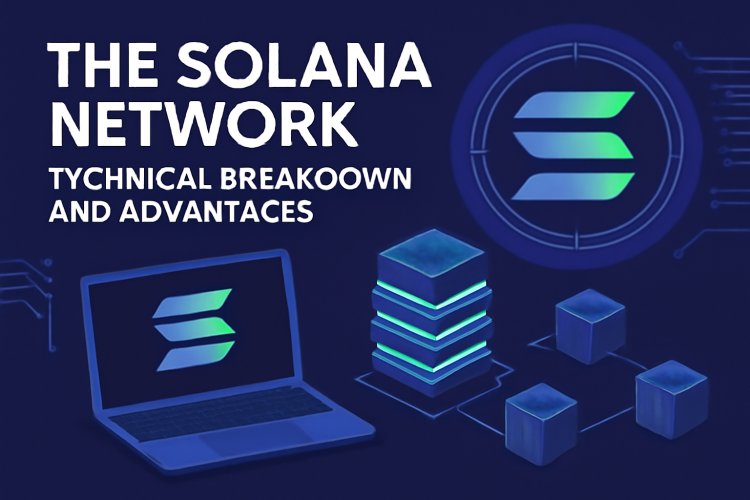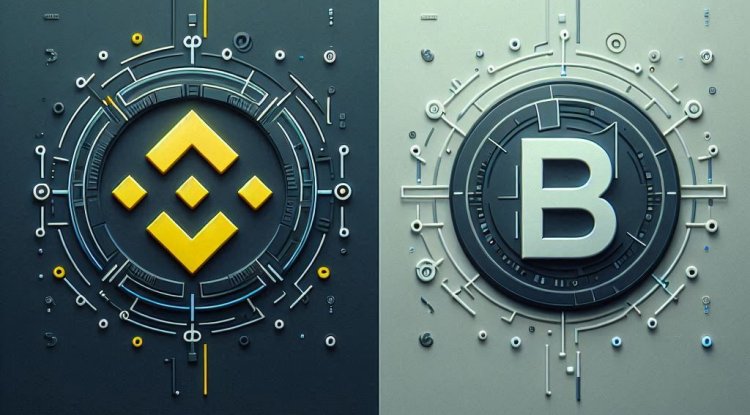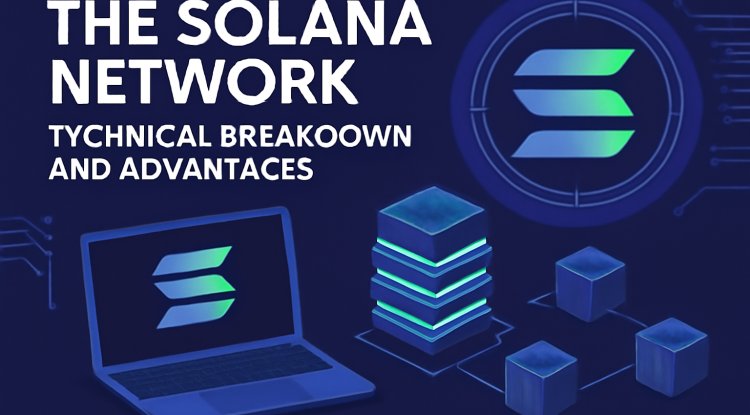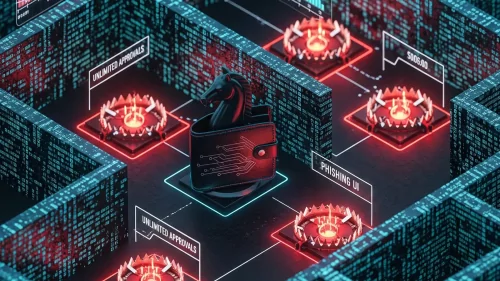Layer-1 Blockchain Wars: Ethereum vs. Solana vs. Avalanche — Who’s Really Winning?
A deep dive into the Layer-1 battle between Ethereum, Solana, and Avalanche. We cut through the hype to analyze tech, ecosystems, and who is best positioned to dominate the future of Web3.
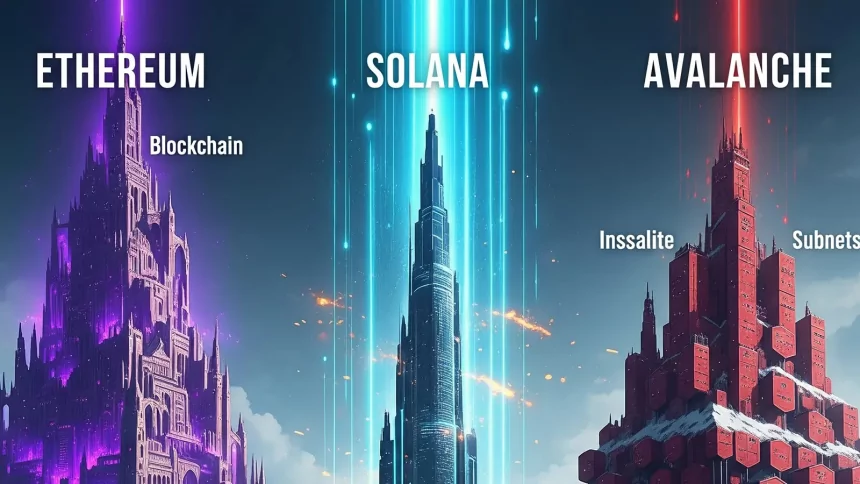
Alright, let's settle in and talk about the biggest fight in crypto right now. Forget the short-term price charts and the noise on Twitter. The real war, the one that will define the next decade of Web3, is the battle for Layer-1 supremacy.
You’ve got the reigning king, Ethereum, the lightning-fast challenger, Solana, and the incredibly adaptive dark horse, Avalanche. Everyone wants to know the same thing: which ecosystem is going to win?
But here’s the thing… asking "who will win?" is like asking if cars, trains, or airplanes will "win" transportation. They all serve different purposes, and the smart money isn’t betting on just one. It’s about understanding the unique philosophies and trade-offs each of these giants has made. So, let's break it down, not like a lecture, but like we're figuring out where to place our bets for the future.
The Kingpin: Ethereum's Unshakeable Moat
First, you have to pay respect to the king. Ethereum is the original smart contract platform. It's battle-tested, survived multiple market cycles, and possesses something that no amount of venture capital can buy overnight: legitimacy and a truly decentralized network.
Think of Ethereum's mainnet as the Manhattan of Web3. It's expensive, it can be slow, and getting anything done during rush hour (like a hot NFT mint) will cost you a fortune in gas fees. It's not designed for your daily coffee purchase. It’s designed for high-value, high-security settlements.
So, how does it plan to scale for billions of users? The answer isn't to make Manhattan bigger, but to build hyper-efficient satellite cities around it. This is the Layer-2 (L2) strategy.
-
The L2 Empire: Projects like Arbitrum, Optimism, and Polygon are Ethereum's answer to the scalability problem. They process thousands of transactions for pennies, then bundle them up and settle them on the ultra-secure Ethereum mainnet. It's a brilliant move. Ethereum focuses on what it does best—security and decentralization—while letting the L2s handle the speed.
Ethereum's biggest strength is its network effect. The vast majority of developers, established DeFi protocols (think Uniswap, Aave), and high-value NFTs are there. This creates a powerful gravitational pull that is incredibly difficult to escape.
The Speed Demon: Solana's Monolithic Bet
Then you have Solana, which burst onto the scene with a completely different philosophy. While Ethereum was building out its empire of L2s, Solana's founders basically said, "To hell with that, let's just build one giant, incredibly fast blockchain."
This is a monolithic approach. The goal is to keep everything on a single, ultra-optimized chain. And man, is it fast. Solana’s low transaction fees and near-instant speeds created a user experience that, for a time, felt like magic compared to Ethereum's sluggish mainnet. It became the go-to place for high-frequency trading, certain gaming applications, and a vibrant, sometimes degen, NFT scene.
But that speed comes with trade-offs. We have to talk about the elephant in the room: the outages.
-
The Price of Performance: Solana's history of network halts raises legitimate questions about its long-term reliability. The focus on raw throughput has, at times, come at the cost of stability. Furthermore, running a Solana validator requires some serious hardware, leading to a smaller, more centralized group of validators compared to Ethereum's global army.
Solana is betting that it can solve its stability issues and that a single, seamless, high-performance chain is ultimately a better developer and user experience than navigating a complex web of L2s. It's a bold gamble, but one that has attracted a fiercely loyal community.
The Corporate Contender: Avalanche and the Subnet Revolution
Avalanche takes a third, fascinating approach. It saw the debate between a decentralized but slow chain (Ethereum) and a fast but more centralized one (Solana) and proposed a hybrid solution: a network of networks.
At its core, Avalanche has a main blockchain for core operations, but its killer feature is Subnets.
Think of a Subnet as your own private, custom-built blockchain that is still connected to the main Avalanche network. Want to build a massive multiplayer online game that needs millions of transactions per second and has its own custom gas token? Spin up a Subnet. Is your financial institution looking to build a compliant, permissioned chain for tokenizing assets? A Subnet is perfect for that.
-
The Customization Play: This makes Avalanche incredibly appealing to enterprises and large-scale applications that need control over their own environment without being subject to the traffic and fee volatility of a public chain. It’s the ultimate B2B (business-to-business) play.
The challenge for Avalanche is that this model can fragment liquidity and users across different Subnets. It’s a more complex architecture. However, its compatibility with Ethereum's code (EVM compatibility) has made it an easy place for developers to migrate and experiment, giving it a strong foothold in the gaming and institutional finance sectors.
The Verdict: There Is No Single Winner
So, after all that, which ecosystem will win? The truth is, they're not even playing the same game. The "L1 Wars" narrative is compelling, but the future is undeniably multi-chain.
Here’s the most likely scenario:
-
Ethereum solidifies its position as the global settlement layer of Web3. The "digital gold" of smart contract platforms, where the highest value transactions and assets are secured. Its massive L2 ecosystem will handle the bulk of everyday activity, making the Ethereum "nation-state" the largest and most economically significant.
-
Solana will thrive as the high-performance layer for applications that demand raw, unadulterated speed. Think decentralized social media, high-frequency trading exchanges, and consumer apps where micro-transactions are the norm. It will be the chain for things that need to feel like the Web2 internet: fast and fluid.
-
Avalanche will become the go-to platform for sovereign applications and enterprises. Its Subnet architecture provides the perfect, customizable solution for large corporations, governments, and gaming studios who want the benefits of blockchain without the "Wild West" chaos of a fully public chain.
The real winner isn't a single chain; it's the user and the developer. We are moving out of an era where you had to build on Ethereum or be ignored, and into a more mature market where you can pick the right tool for the job. The question isn't "who will win the war?" but "which nation are you building your business in?" And for the first time, we have some truly compelling choices.
Share
What's Your Reaction?
 Like
0
Like
0
 Dislike
0
Dislike
0
 Love
0
Love
0
 Funny
0
Funny
0
 Angry
0
Angry
0
 Sad
0
Sad
0
 Wow
0
Wow
0
